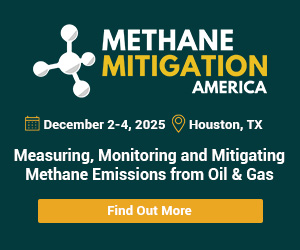
Chevron Corp. chose West Texas as the site of its first project to provide natural gas-fired power to a data center, the beginning of a new line of business for the oil giant to capitalize on the boom in artificial intelligence.
The company is in exclusive talks with the data center’s end user, which it didn’t name, and anticipates making a final investment decision early next year, according to a statement and presentation released ahead of Chevron’s investor day on Wednesday. The facility is expected be operational in 2027, and will have capacity to generate as much as 5,000 megawatts in the future.
Big Oil is looking to cash in on the enormous demand for energy that will be needed to power data centers, which are being located further away from major population centers and closer to sources of fuel. Chevron is one of the biggest producers in the Permian Basin of West Texas, which spews out so much natural gas that it often overwhelms pipelines and has to be burned off.
“We’ve got the gas,” Chief Financial Officer Eimear Bonner said in an interview prior to Chevron’s investor presentation in New York on Wednesday. “We are uniquely positioned to have a very competitive project.”
The power project is expected to ramp up by its third year to have the capacity to produce about 2,500 megawatts, which is more than the equivalent of two nuclear reactors. It will likely be built separately from the grid to avoid competing with electricity supply for the wider population. Chevron sees an opportunity to secure demand for its 3 billion cubic feet per day of natural gas output.
The stock declined 1.7% by 10 a.m. in New York, with Brent crude prices trading down 2.7% at $63.41 a barrel.
Key to Chevron’s venture into AI was forming a partnership with Engine No. 1, the investor that ran a successful activist campaign against arch-rival Exxon Mobil Corp. in 2021. The collaboration with Engine No. 1 secured an order for seven large natural gas turbines from GE Vernova Inc.
Chevron executives are due to explain its power strategy in more detail at the investor day, the Houston-based company’s first for nearly three years. The energy giant expects to grow production through 2030 even while reducing capital spending, which will allow it to increase free cash flow 14% annually over the next five years, it said.
The company expects to buy back between $10 billion and $20 billion of stock annually through 2030 at average prices of $60 to $80 a barrel Brent crude. It didn’t change its current share repurchases, which were $2.6 billion in the last quarter, the low end of the range.
“You can count on us to be prepared for the unexpected, and resilient through any headwinds,” Chief Executive Officer Mike Wirth said in prepared remarks.
New long-term targets include:
- Reduced annual capital budget to $18 billion to $21 billion through 2030 from $19 billion to $22 billion
- Chevron expects to make about $30 billion in free cash flow by 2030, about 75% higher than current levels, at $70-a-barrel Brent
- Generating enough cash to cover its dividend and capital spending with Brent at $50 a barrel
- Growing oil and gas production by 2% to 3% annually
- Analysts at JPMorgan Chase & Co. had been expecting growth of about 1.7% annually
- Increasing annual cost savings to as much as $4 billion by the end of 2026, up from as much as $3 billion previously
Share This:




 CDN NEWS |
CDN NEWS |  US NEWS
US NEWS 




























